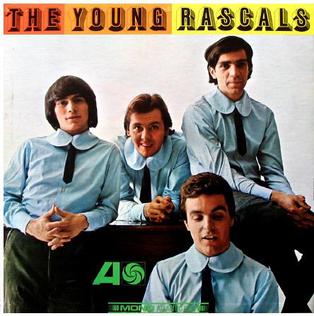 |
| Felix Cavaliere |
Best known for their string of chart-topping signature hits “Good Lovin’

“That was a silly choice,” he says with a hint of bitterness and frustration that lingers four decades later. “I still resent and regret that choice. A band should be able to play under its own name.”
Cavaliere and The Rascals were just beginning a career that would eventually take them to the Rock and Roll Hall of Fame, when Borrah Minnevitch and Johhy Puleo’s “Harmonica Rascals” came into their lives. As Felix tells the story, the other “Rascals” — brandishing harmonicas and lawyers — objected.
“They said they owned the name, that people would be confused,” he says. “Our manager panicked.” So did Atlanic Records. The Rascals, the blue-eyed soul version sans Hohners, awoke one morning to learn their debut album was going to be pressed as “The Young Rascals.” A mix of originals and covers – including Bob Dylan’s Like a Rolling Stone
“As soon as we had our first hit record, the ‘Young’ went,” Cavaliere recalls. So did the gimmick knickers and matching Buster Brown suits the band adopted to get the industry’s attention. Cavaliere was even able to ditch the lollipop.
“The only plan I had was to take four strong musicians – four strong individuals – and put them in group,” he says. In a day when most white bands defined showmanship as a wink and a smile to the girls, Cavaliere went after musicians who had fronted their own bands and knew how to connect.“In those days you had to wear a tie,” he says.
“We were just looking for anything to get out of wearing coats and ties.” Didn’t work. “We still wound up wearing ties,” he says with a laugh. Bad ties. But it was a means to an end.
“We were just looking for anything to get out of wearing coats and ties.” Didn’t work. “We still wound up wearing ties,” he says with a laugh. Bad ties. But it was a means to an end.
“Thats why that kind of happened,” he says. “Each of them was used to being focal point of a group. That made us unique. The forumla worked.”
More than 40 years later, Felix still remembers “the phone call.”
“We had a number one million-seller. We were just euphoric. We blasted into orbit. We couldn’t imagine anything like that happening that quickly. You dream about it all your life and then it happens. We had a fantastic song and we knew we had a winner.”
And the Harmonica Rascals? Borah and Johnny are still waiting for the phone to ring.
With the release of “People Got to Be Free” amid the turbulence of 1968, the band took up the civil rights struggle. The song was a musical plea for racial equality and tolerance, a stance that wasn’t universally popular in the year that saw Martin Luther King gunned down on the balcony of a Memphis motel.
Some white radio stations, especially in the deep South, banned the song from their play lists. Even so, “Free” climbed to the top spot on the Billboard charts. It was a clear departure for a band that began life in knickers and lollipops.
“When we toured, we always tried to add to the show an integrated act, it was important to our act,” he says. “I’ve always been that way. I grew up as an Italian kid in a Waspy neighborhood. To me, music is music and people are people. And we got a tremendous amount of play on black stations. The way shows were presented, it was something we decided to change.”
Fast forward to 2011. Although the original band re-united a year ago for a benefit concert in New York that closed with Bruce Springsteen (“He’s a force. It’s why people love him so much.It’s something you notice – this guy’s having a good time”) and fellow E-Streeter Steve Van Zandt gigging to “Good Lovin’,” the Rascals haven’t been immune to the internal conflicts that come with success at a young age.
“There’s that same kind of distance,” he says of his relationship with the founding Rascals. “It’s odd. There was no embezzlement, no band romances … none of that kind of stuff. Just stupidity, I guess.”
Cavaliere sings the praises of his current band. “The new guys are just excellent,” he says. “They’re all session guys from Nashville. They’re fantasic musicians who know how to put on a show.” And as a bonus, he now has a bass player. Back in the day, Felix was forced play the bottom end on the pedals of his Hammond B-3. “An organ just can’t reproduce the sound you get with a bass.”
Felix says he has resisted the urge to “overhaul” the band’s standards. This means no reggae version of “Groovin’.” No messin’ with success.
“The audience wants it their way,” he says. “We keep it fresh, but you’re going to hear a retrospective of our years together, and there’s a trememdous amount from those years that we weave into act. The band is great, people will have a good time.”
UPDATE: Here's the follow-up story. And here's the photo gallery.
UPDATE: Here's the follow-up story. And here's the photo gallery.